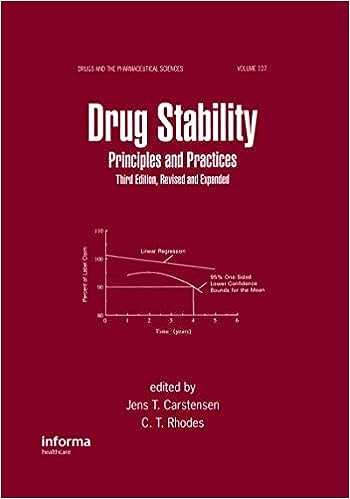Testing Products with Limited Solubility: Recommended Procedure
Testing products with limited solubility poses unique challenges that require careful consideration to ensure accurate results and meaningful stability assessments. Products with limited solubility often exhibit complex dissolution and degradation behaviors that can impact stability testing outcomes.
Pre-Formulation Studies
1. Solubility Determination: Conduct thorough solubility studies to understand the maximum solubility of the drug substance in relevant solvents and conditions.
2. Co-Solvent Selection: Explore the use of co-solvents to enhance solubility, but consider their impact on product stability.
Forced Degradation Studies
1. Stress Conditions: Subject the product to stress conditions to identify potential degradation pathways, even for limited solubility samples.
2. Solubility Effects: Assess changes in solubility and dissolution behavior under stress conditions.
Dissolution Testing
1. Method Development: Develop dissolution methods that mimic physiological conditions and account for the limited solubility of the product.
2. Apparatus Selection: Choose appropriate dissolution apparatus and media that reflect the intended usage
and administration of the product.Media Selection
1. Biorelevant Media: Consider using biorelevant media that simulate the gastrointestinal environment for oral products.
2. pH Adjustment: Adjust the pH of dissolution media to enhance solubility while maintaining physiological relevance.
Modeling and Simulation
1. Physiologically Based Pharmacokinetic (PBPK) Models: Utilize PBPK modeling to predict the impact of limited solubility on systemic exposure and stability.
2. In Vitro-In Vivo Correlation (IVIVC): Develop IVIVC models to establish a relationship between in vitro dissolution and in vivo behavior.
Sample Preparation
1. Particle Size: Optimize particle size reduction techniques to increase surface area and potentially enhance dissolution.
2. Micronization: Evaluate the benefits of micronization in improving dissolution rates for products with limited solubility.
Data Interpretation
1. Dissolution Profiles: Analyze dissolution profiles to understand release patterns and identify any anomalous behaviors.
2. Degradation Analysis: Correlate dissolution results with degradation patterns to assess the impact of dissolution on stability.
Statistical Approaches
1. Statistical Analysis: Apply appropriate statistical techniques to evaluate dissolution data and detect significant differences.
2. Variability Assessment: Consider the inherent variability in dissolution results and its implications on stability assessment.
Documentation and Reporting
1. Method Development Report: Document the development and validation of dissolution methods tailored for limited solubility products.
2. Stability Protocols: Describe the dissolution testing procedures and their relevance to stability assessments in stability protocols.
Conclusion
Testing products with limited solubility requires a comprehensive and adaptable approach that encompasses pre-formulation studies, dissolution testing, modeling, and appropriate data analysis. By tailoring dissolution methods to mimic physiological conditions and accounting for the unique characteristics of limited solubility products, manufacturers can ensure accurate stability assessments and informed decisions about product quality and efficacy.
